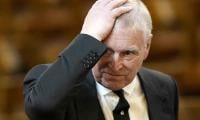Economic recovery continued in first half of FY22: SBP
KARACHI: State Bank of Pakistan (SBP) on Friday said the economy continued to recover in the first half of the last fiscal year on the back of broad-based expansion in industrial output, healthy exports and growth in tax revenues.
However, amid multi-year high global commodity prices, rising inflation and current account deficit posed a challenge as the year progressed. These pressures necessitated monetary tightening amidst other regulatory measures to moderate demand, the SBP said in its half year report for FY2022 on the State of Pakistan’s Economy.
With the analysis prepared on data outturns for the July-December FY2022, the report states that improved Covid conditions, alongside the government’s vigorous vaccination drive, paved way for largely uninterrupted economic activities.
In addition, fiscal measures, including tax cuts on certain sectors and expansion in federal and provincial development spending, coupled with higher non-interest current expenditures supplemented economic growth. The lagged impact of favourable monetary conditions of FY2021 along with SBP’s concessionary financing schemes; and an accommodative policy environment at the start of FY2022 also facilitated economic activities and capacity expansion.
Accordingly, LSM witnessed a broad-based increase in July-December FY2022 where 16 out of 22 LSM sectors recorded output growth. In agriculture sector, output in Kharif season was primarily driven by record production in rice and sugarcane crops. Cotton production also increased over last year mainly due to favourable weather conditions.
Private sector credit grew nearly fourfold in H1-FY2022 on year-on-year basis. This was mainly on the back of working capital requirements that rose due to increased domestic demand, higher exports, as well as the global commodity price hike and ensuing jump in domestic wholesale prices during H1-FY2022.
Expansion in economic activities was also visible in the demand for loans for fixed investments and consumer financing, albeit the latter experienced a policy-induced moderation in the second quarter.
The report notes that soaring global commodity prices, coupled with growing domestic demand, especially for industrial inputs, resulted in a widening of the current account deficit, despite double-digit growth in workers’ remittances to $15.8 billion in H1-FY2022.
Exports grew considerably in the first half, notwithstanding some deceleration in the second quarter. Both higher unit prices and export volumes contributed to export growth with a $3.4 billion YoY increase in H1-FY2022 to $15.2 billion – which is the highest ever half-yearly export outturn.
However, despite slightly slower import momentum in the second quarter, the increase in H1-FY2022 imports was nearly four times the increase in exports. In addition to the dominant role of global commodity price hike, import growth was led by elevated demand for raw materials and capital goods; Covid-19 vaccine procurement; and the continued need to import wheat and sugar to plug domestic supply gaps, the report said.
Amid a widening current account deficit, the market-determined exchange rate depreciated by 10.7 percent in the interbank market during H1-FY2022. However, the SBP’s foreign exchange reserves remained relatively stable till the end of H1-FY22, supported by $1 billion inflow from Eurobond issuance, additional SDR allocation of $2.8 billion from the IMF in the first quarter of FY2022, and bilateral deposits of $3 billion from Saudi Arabia in Q2.
The strength of the economy, broad-based inflationary pressures and the widening of the current account deficit necessitated a cumulative increase of 275 basis points in the policy rate during H1. This was aimed at ensuring sustainability in both economic growth and the external account, as well as anchoring inflation expectations. In addition, additional measures, such as increase in cash reserve requirements and tightening of prudential regulations, were taken to moderate demand pressures.
-
 Mike Tindall Shares Photos With Wife Zara And Prince Harry's Friend
Mike Tindall Shares Photos With Wife Zara And Prince Harry's Friend -
 Iman Honours David Bowie On His 10th Death Anniversary With New Tattoo
Iman Honours David Bowie On His 10th Death Anniversary With New Tattoo -
 Zara Larsson Makes Provocative Political Statement
Zara Larsson Makes Provocative Political Statement -
 Danielle Brooks Recalls Hilarious Daughter Moment
Danielle Brooks Recalls Hilarious Daughter Moment -
 Tom Blyth Explains Rationale Behind Choosing 'lighter' Roles
Tom Blyth Explains Rationale Behind Choosing 'lighter' Roles -
 Prince Harry Wants King Charles To Open His Event
Prince Harry Wants King Charles To Open His Event -
 Buckingham Palace Seeks New King Charles Aide With A Warning About AI Use
Buckingham Palace Seeks New King Charles Aide With A Warning About AI Use -
 Charlie Heaton Shares His Two Cents On Popular 'Stranger Things' Theory
Charlie Heaton Shares His Two Cents On Popular 'Stranger Things' Theory -
 Prince Harry Turns Towards Manipulation For Security: ‘Whoever Is Behind It Realise How Counterproductive You Are’
Prince Harry Turns Towards Manipulation For Security: ‘Whoever Is Behind It Realise How Counterproductive You Are’ -
 ‘Exhausting’ Meghan Markle Becomes Delusional As Alienation Threatens To Grow
‘Exhausting’ Meghan Markle Becomes Delusional As Alienation Threatens To Grow -
 Gracie Abrams Claims To Be 'beyond Ready' For Third Studio Album
Gracie Abrams Claims To Be 'beyond Ready' For Third Studio Album -
 Katy Perry Plans To Capitalize On Her High-profile Relationship With Justin Trudeau
Katy Perry Plans To Capitalize On Her High-profile Relationship With Justin Trudeau -
 Kate Middleton Praised For Keeping Children's Lives Normal
Kate Middleton Praised For Keeping Children's Lives Normal -
 AJ Michalka Reveals How Joe Jonas Breakup Happened
AJ Michalka Reveals How Joe Jonas Breakup Happened -
 Elle Fanning Drops A Hint About Her Role In Upcoming 'Hunger Games' Film
Elle Fanning Drops A Hint About Her Role In Upcoming 'Hunger Games' Film -
 Jenny McCarthy Makes Blunt Statement On Use Of AI: 'Red Flag'
Jenny McCarthy Makes Blunt Statement On Use Of AI: 'Red Flag'



